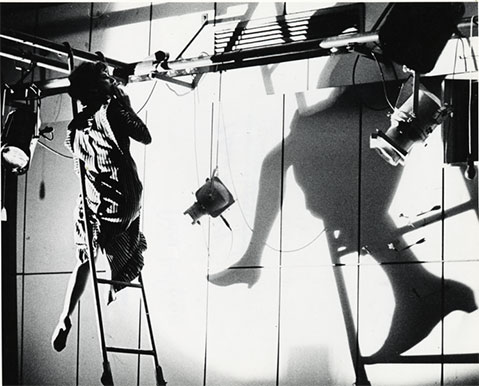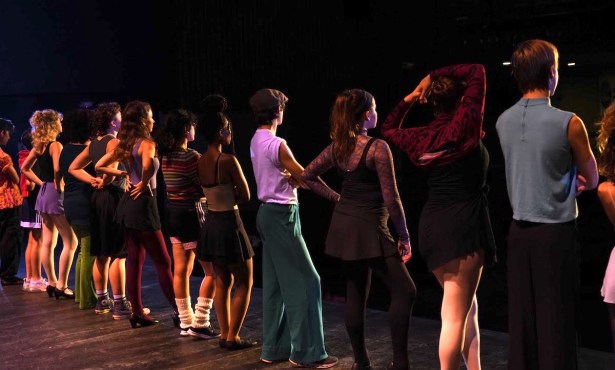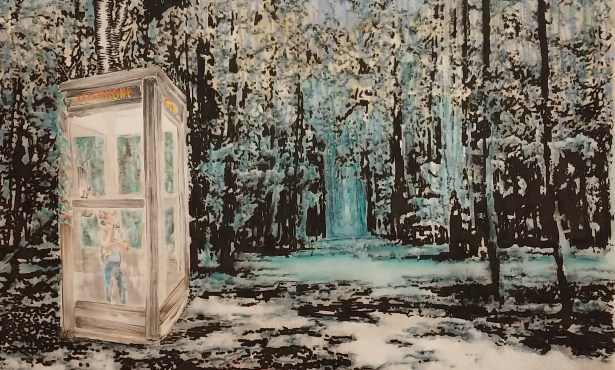‘Radical Bodies’ at UCSB’s AD&M
The Revolutionary Dance Art of Anna Halprin, Simone Forti, and Yvonne Rainer

For decades, the tumultuous period in art history that followed abstract expressionism has been explained through a proliferation of labels. Pop art and Earth art, minimalism and postmodernism, performance art and conceptual art — all these terms and more have been used in various attempts to organize the chaotic impulses that revolutionized the art world beginning in the late 1950s. With Radical Bodies: Anna Halprin, Simone Forti, and Yvonne Rainer in California and New York, 1955-1972, UCSB professors Bruce Robertson and Ninotchka Bennahum have overturned these labels in favor of a new interpretation of history that puts women, dance, California, and the “radical body” on an even footing with men, painting, New York, and the “anxious objects” of postmodern art.
It’s a daring and richly evocative revision that challenges received ideas while championing some of the most interesting and neglected work of the period in any medium. Fittingly for such an ambitious interdisciplinary project, their effort has required several approaches and multiple collaborators, including all three of the women who form the core subject of their study. The exhibition Radical Bodies at UCSB’s Art, Design & Architecture Museum, which opened January 14 and continues through April 30, includes more than 200 objects, from photographs and films of the dancers to drawings, letters, diagrams, and props that were key to these artists’ exploration of space and movement.
As part of its Dance Conference Weekend, the university will offer several opportunities to experience Radical Bodies in person. All three of the women — Halprin, Forti, and Rainer — are coming to Santa Barbara for a series of events that includes a film screening, an all-day conference on Friday, a reception Friday evening, and a pair of dance performances on Friday and Saturday nights. Friday’s 8 p.m. performance at UCSB’s Hatlen Theater features Rainer’s company dancing “The Concept of Dust,” her most recent work, and Saturday’s 7 p.m. program includes works by all three choreographers, with a portion of Halprin’s epochal “Parades and Changes” (1965) set on the UCSB Student Dance Company.
In order to know what to expect from Radical Bodies, it’s useful to start looking at where it all began, on a wooden platform in rural Northern California. Before Andy Warhol had his Factory, Halprin had her dance deck. It was on this graceful structure in Kentfield, California, near Mt. Tamalpais and under an open sky, that many of the key innovations occurred that would make later art movements such as minimalism possible. By juxtaposing the work done on Halprin’s dance deck with the developments it spawned through New York’s famously influential Judson Dance Theater, Radical Bodies raises the matriarchal tradition of dance in America to an equal status with other longstanding art historical narratives such as “the triumph of American painting” or “John Cage, Merce Cunningham, and the rise of indeterminacy.” Halprin’s workshops, which often included sound by the seminal minimalist composer La Monte Young, created a tectonic shift felt all the way on the other side of the continent, and by revisiting them, it’s possible to reframe the development of music, theater, and art in a way that foregrounds the influence of this revolution in dance.
When she met her husband and lifelong creative partner, Lawrence Halprin, Anna Halprin was an undergraduate at the University of Wisconsin. Already impatient with what she felt was the narcissism and rigid gender roles implicit in traditional dance as performed in proscenium theaters, Halprin (then known as Anna Schuman) followed Larry in 1942 to Harvard, where Walter Gropius was introducing Bauhaus ideas about design to America. After Larry experienced a close call in the Pacific theater — his U.S. Navy ship was cut in two by a kamikaze — the couple moved to the Bay Area, where he went on to become perhaps the most influential landscape architect on the West Coast, the designer of Sproul Plaza at UC Berkeley, the campus plan at UC Davis, and successful city parks in Portland and Seattle.
First in San Francisco and then on the deck that her husband designed, Anna Halprin conducted workshops that soon became a legend among a wide range of practitioners, not only of dance but of music and art, as well. Forti met Halprin in 1955 and made an immediate impression with her intuitive understanding of what Halprin was driving at aesthetically. Nor was this lost on her husband at the time, Robert Morris, who would go on to become known as one of the founders of minimalism in the visual arts. Forti and a young Rainer, then married to abstract painter Al Held, took what they found on Halprin’s deck to New York City, where the Judson Dance Theater became the epicenter of a scene that included such luminaries as Robert Rauschenberg and Richard Serra. In a subtly nuanced essay for the Radical Bodies catalog, Professor Robertson elucidates the various ways in which the New York visual art scene of the 1960s absorbed and then expanded on the ideas these women brought back from California.
For students at the university, as well as for the Santa Barbara community, Radical Bodies represents an unequalled opportunity to explore one of the most interesting and influential moments in the history of art.



